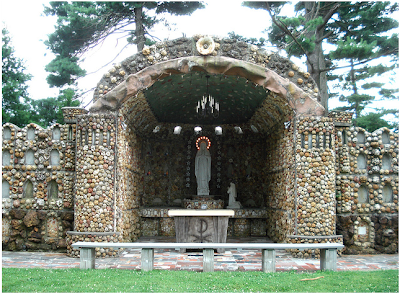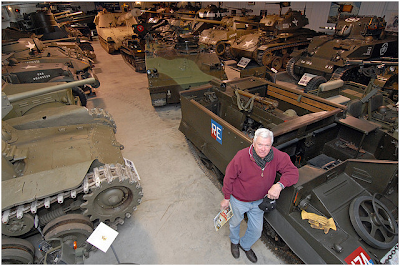The Monty Hall Problem
The Monty Hall problem is a probability puzzle loosely based on the American television game show Let's Make a Deal and named after the show's original host, Monty Hall. The problem, also called the Monty Hall paradox, is a veridical paradox because the result appears odd but is demonstrably true. The Monty Hall problem, in its usual interpretation, is mathematically equivalent to the earlier Three Prisoners problem, and both bear some similarity to the much older Bertrand's box paradox.
The problem was originally posed in a letter by Steve Selvin to the American Statistician in 1975. (Selvin 1975a) (Selvin 1975b) A well-known statement of the problem was published in Marilyn vos Savant's "Ask Marilyn" column in Parade magazine in 1990 (vos Savant 1990):
Suppose you're on a game show, and you're given the choice of three doors: Behind one door is a car; behind the others, goats. You pick a door, say No. 1 [but the door is not opened], and the host, who knows what's behind the doors, opens another door, say No. 3, which has a goat. He then says to you, "Do you want to pick door No. 2?" Is it to your advantage to switch your choice?
Vos Savant's response was that the contestant should always switch to the other door. If the car is initially equally likely to be behind each door, a player who picks Door 1 and doesn't switch has a 1 in 3 chance of winning the car while a player who picks Door 1 and does switch has a 2 in 3 chance. The host has removed an incorrect option from the unchosen doors, so contestants who switch double their chances of winning the car.
Many readers refused to believe that switching is beneficial. After the Monty Hall problem appeared in Parade, approximately 10,000 readers, including nearly 1,000 with PhDs, wrote to the magazine claiming that vos Savant was wrong. Even when given explanations, simulations, and formal mathematical proofs, many people still do not accept that switching is the best strategy. The Monty Hall problem has attracted academic interest because the result is surprising and the problem is interesting to formulate.
The Birthday Problem
In probability theory, the birthday problem or birthday paradox pertains to the probability that, in a set of n randomly chosen people, some pair of them will have the same birthday (month and day). By the pigeonhole principle, the probability reaches 100% when the number of people reaches 366 (every day of the year). However, 99% probability is reached with just 57 people, and 50% probability with 23 people. These conclusions are based on the assumption that each day of the year (except February 29) is equally probable for a birthday. This is to say, if you take just 57 people you are 99% likely to find two people with same birthday, contrary to the common conclusion it would take near 365 to reach that likelihood.
Note From Josh
See the Wikipedia links at the bottom for the mathematical explanation of these problems. You can also see visual descriptions for each, respectively, here: http://www.youtube.com/watch?v=mhlc7peGlGg and http://www.youtube.com/watch?v=16zXXmSX2v0
From: http://en.wikipedia.org/wiki/Monty_Hall_problem and http://en.wikipedia.org/wiki/Birthday_problem
The Monty Hall problem is a probability puzzle loosely based on the American television game show Let's Make a Deal and named after the show's original host, Monty Hall. The problem, also called the Monty Hall paradox, is a veridical paradox because the result appears odd but is demonstrably true. The Monty Hall problem, in its usual interpretation, is mathematically equivalent to the earlier Three Prisoners problem, and both bear some similarity to the much older Bertrand's box paradox.
The problem was originally posed in a letter by Steve Selvin to the American Statistician in 1975. (Selvin 1975a) (Selvin 1975b) A well-known statement of the problem was published in Marilyn vos Savant's "Ask Marilyn" column in Parade magazine in 1990 (vos Savant 1990):
Suppose you're on a game show, and you're given the choice of three doors: Behind one door is a car; behind the others, goats. You pick a door, say No. 1 [but the door is not opened], and the host, who knows what's behind the doors, opens another door, say No. 3, which has a goat. He then says to you, "Do you want to pick door No. 2?" Is it to your advantage to switch your choice?
Vos Savant's response was that the contestant should always switch to the other door. If the car is initially equally likely to be behind each door, a player who picks Door 1 and doesn't switch has a 1 in 3 chance of winning the car while a player who picks Door 1 and does switch has a 2 in 3 chance. The host has removed an incorrect option from the unchosen doors, so contestants who switch double their chances of winning the car.
Many readers refused to believe that switching is beneficial. After the Monty Hall problem appeared in Parade, approximately 10,000 readers, including nearly 1,000 with PhDs, wrote to the magazine claiming that vos Savant was wrong. Even when given explanations, simulations, and formal mathematical proofs, many people still do not accept that switching is the best strategy. The Monty Hall problem has attracted academic interest because the result is surprising and the problem is interesting to formulate.
The Birthday Problem
In probability theory, the birthday problem or birthday paradox pertains to the probability that, in a set of n randomly chosen people, some pair of them will have the same birthday (month and day). By the pigeonhole principle, the probability reaches 100% when the number of people reaches 366 (every day of the year). However, 99% probability is reached with just 57 people, and 50% probability with 23 people. These conclusions are based on the assumption that each day of the year (except February 29) is equally probable for a birthday. This is to say, if you take just 57 people you are 99% likely to find two people with same birthday, contrary to the common conclusion it would take near 365 to reach that likelihood.
Note From Josh
See the Wikipedia links at the bottom for the mathematical explanation of these problems. You can also see visual descriptions for each, respectively, here: http://www.youtube.com/watch?v=mhlc7peGlGg and http://www.youtube.com/watch?v=16zXXmSX2v0
From: http://en.wikipedia.org/wiki/Monty_Hall_problem and http://en.wikipedia.org/wiki/Birthday_problem






















































